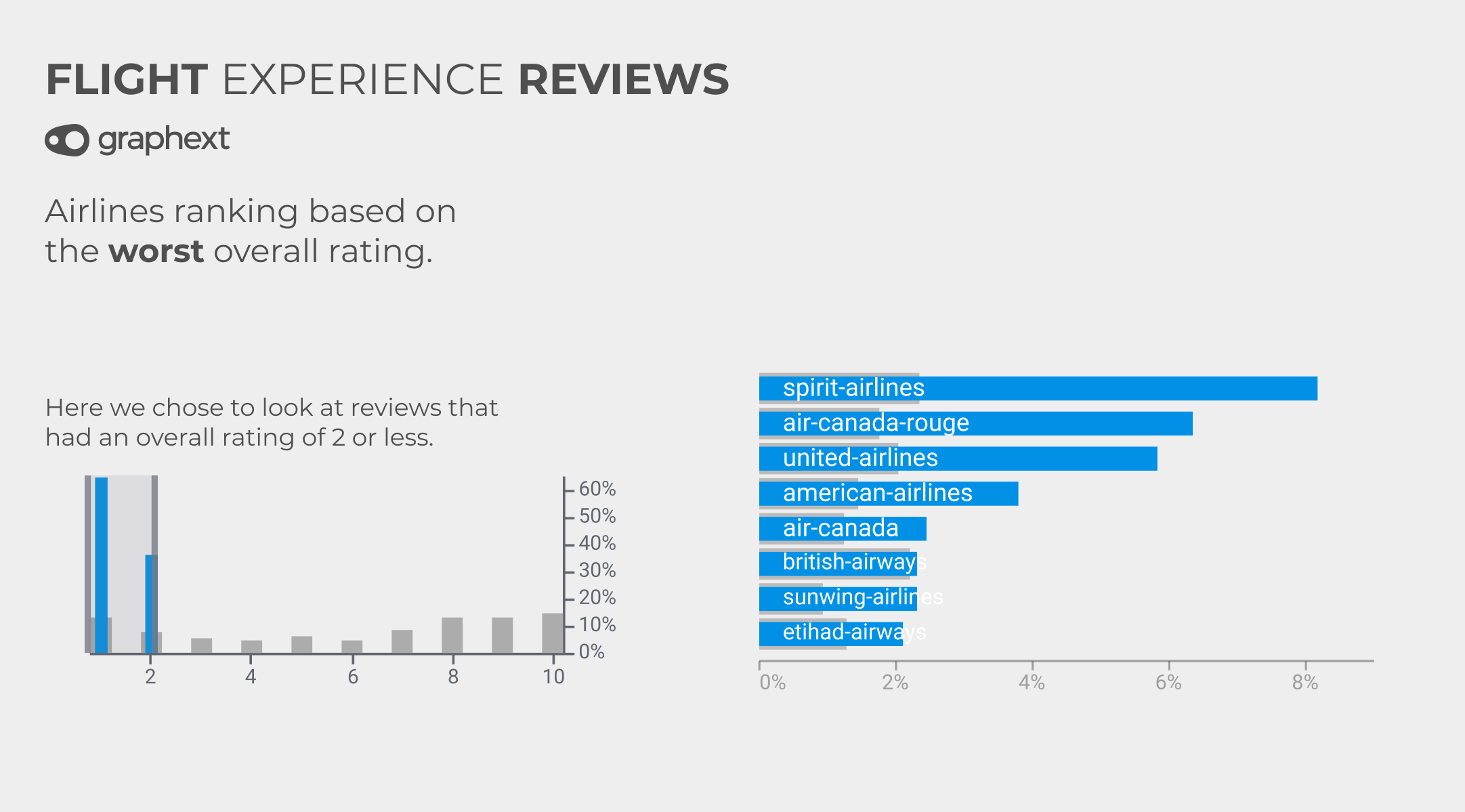
The Lipstick Effect: Did the 2008 Financial Crisis Drive an Increase in Positive Airline Reviews?
Right after the 2008 economic crisis, customer satisfaction among flight passengers seemed to increase around the world. Have you notice that the flight experience is better now than a decade ago? After the 2008 financial crisis there has been a substantial increase in the amount of positive airline reviews.
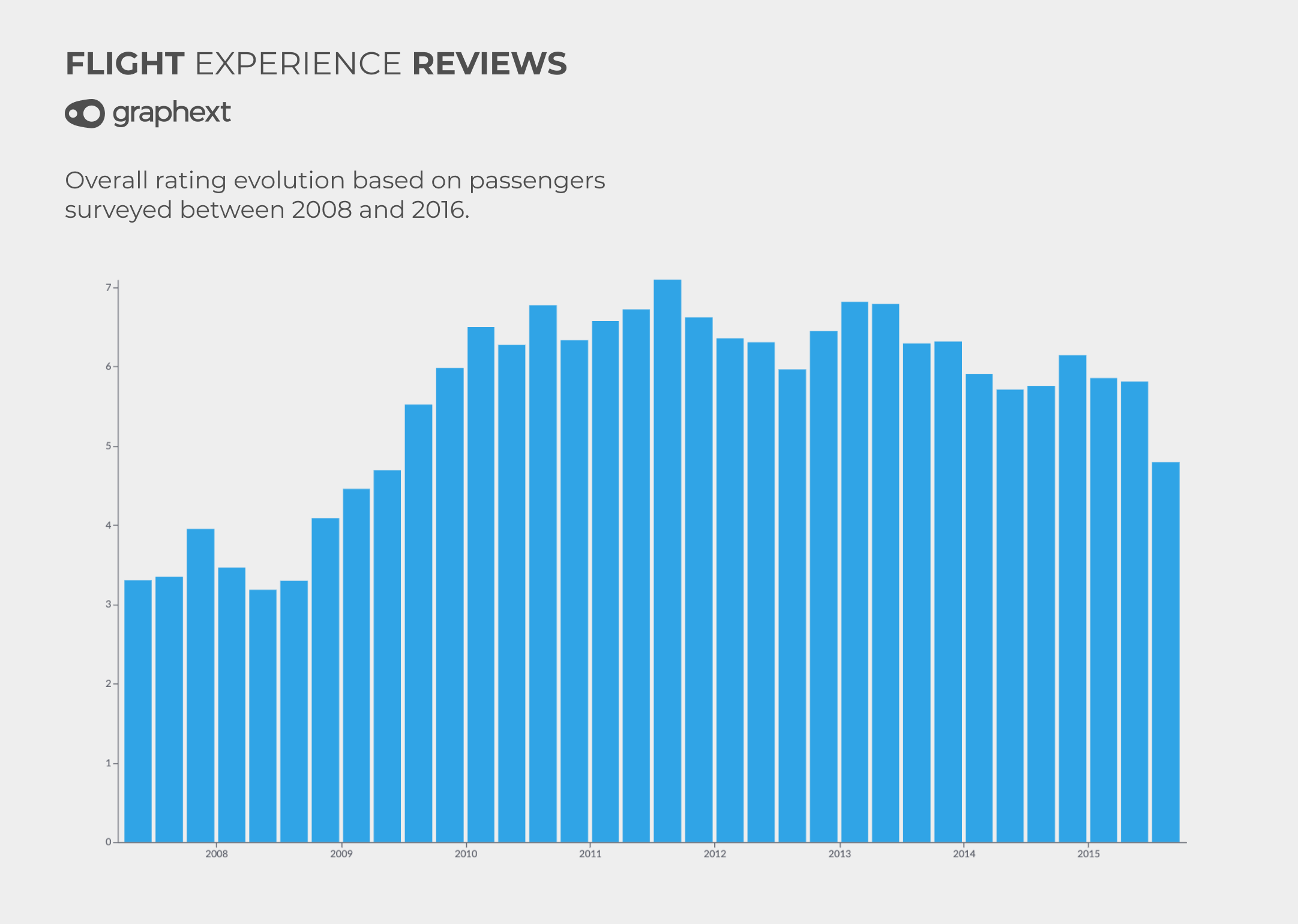
Trends: The number of positive airline reviews between 2007 - 2016.
But that is not the only noteworthy insight. We can also see that said increase stopped in the first half of 2011, exactly when we started to notice signs of economic recovery. In fact, we can see that in recent years ratings not only stagnated but actually began to decrease. Recently, COVID-19 has impacted the tourism industry immensely. Will we see history repeating itself once more?
Our team wondered about the trends shown in the data. Setting out to investigate the factors potentially driving them, we set out to analyze 30K airline reviews in the hope of validating some of our suspicions. Do people show more gratitude during hard times? Has flight service improved considerably?
The 'lipstick effect' suggests that, during recessions, people tend to spend more money on small luxuries like lipstick.
One of the driving factors that comes to mind is the "lipstick effect", a theory that says that during recessions, people tend to spend more money on small luxuries that signals status like lipstick. It might explain why Airlines focused on improving things like food or amenities for business travelers during the crisis. Just for economic geeks we leave a link explaining more details about this effect.
But maybe drivers are not related to economic theories at all. Perhaps the explanation comes from airlines actually improving their services. The data we gathered contained 30k airline services reviews and included information on the airline, destination, companions and reasons for travel as well as an open ended question inviting customers to comment on any complaints or suggestions.
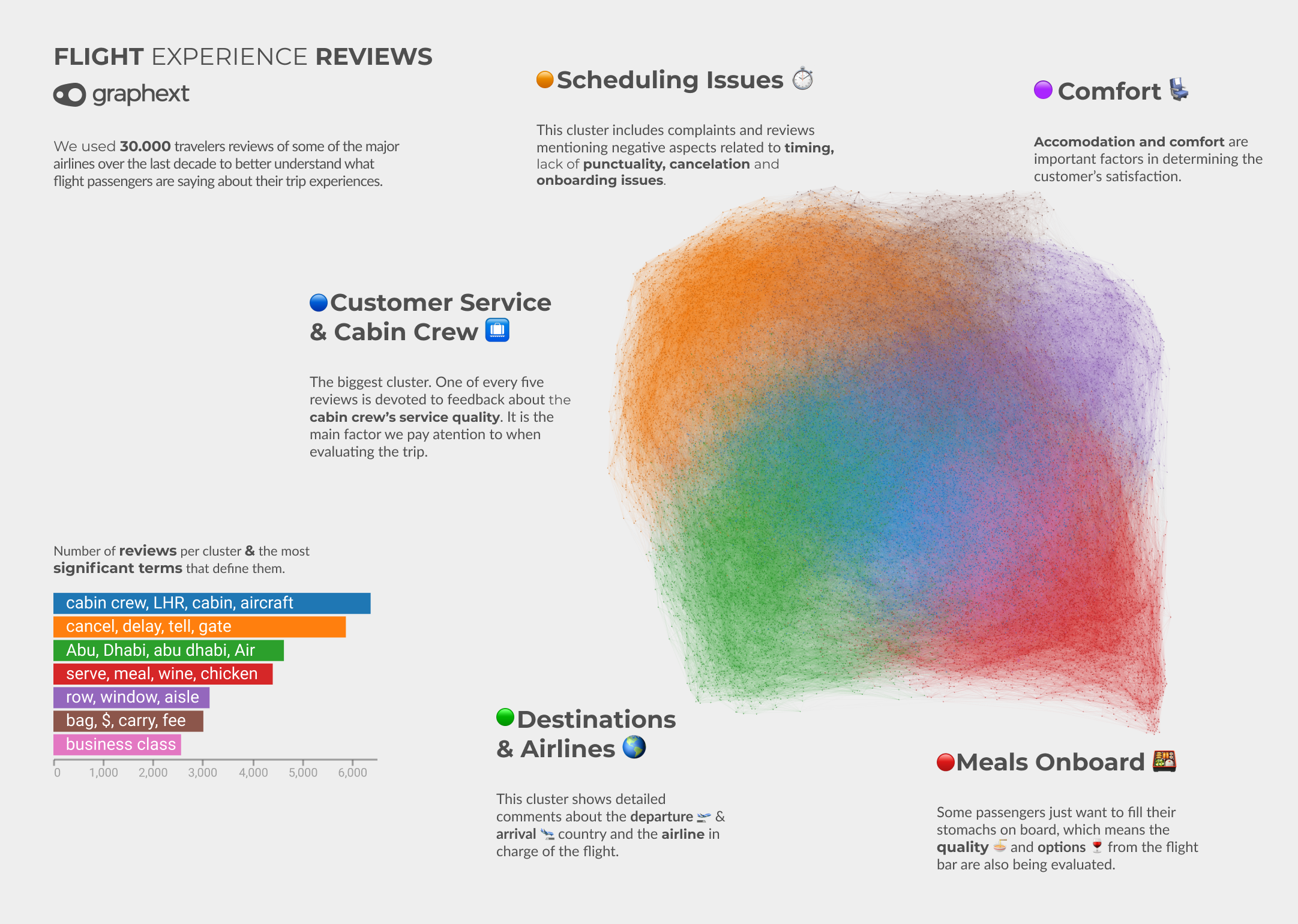
Graph: Airline reviews clustered according to the content of the review.
According to the survey, cabin crew service and scheduling issues were the passengers' main concerns However, accommodation and food quality were also widespread topics among surveyed travellers.
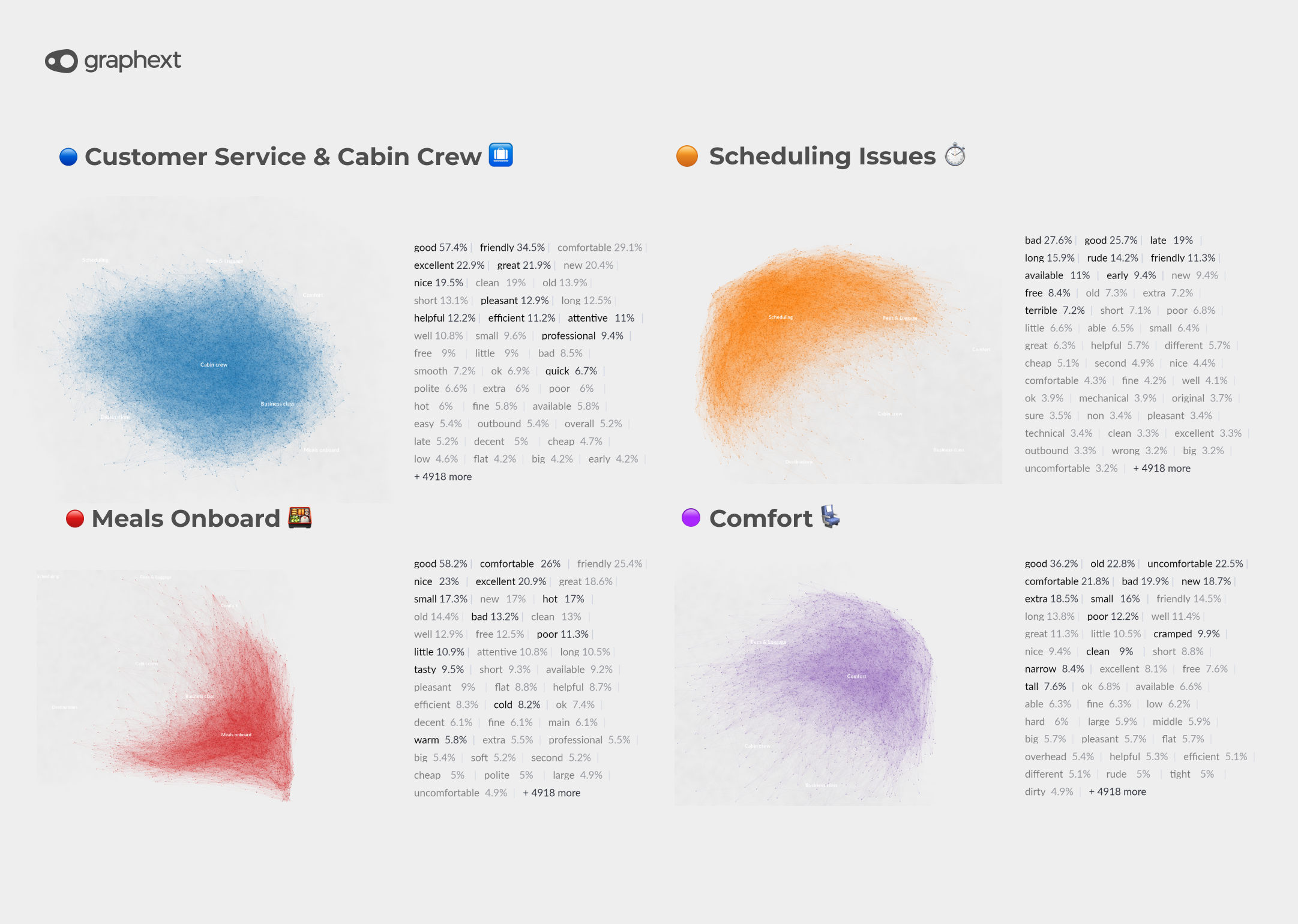
Cabin crews were widely associated with positive reviews.
"Good, friendly, pleasant or efficient..." are some of the adjectives we found related to customer service reviews. This signifies that the perception of cabin crews was generally positive. The International Air Transport Association (IATA) actually published an article talking about this. On the other hand, "bad (28%), rude, long and terrible..." are connected to reviews about onboarding and scheduling issues. Generally speaking, people seem to be satisfied with the food onboard and opinions on plane comfort are divided.
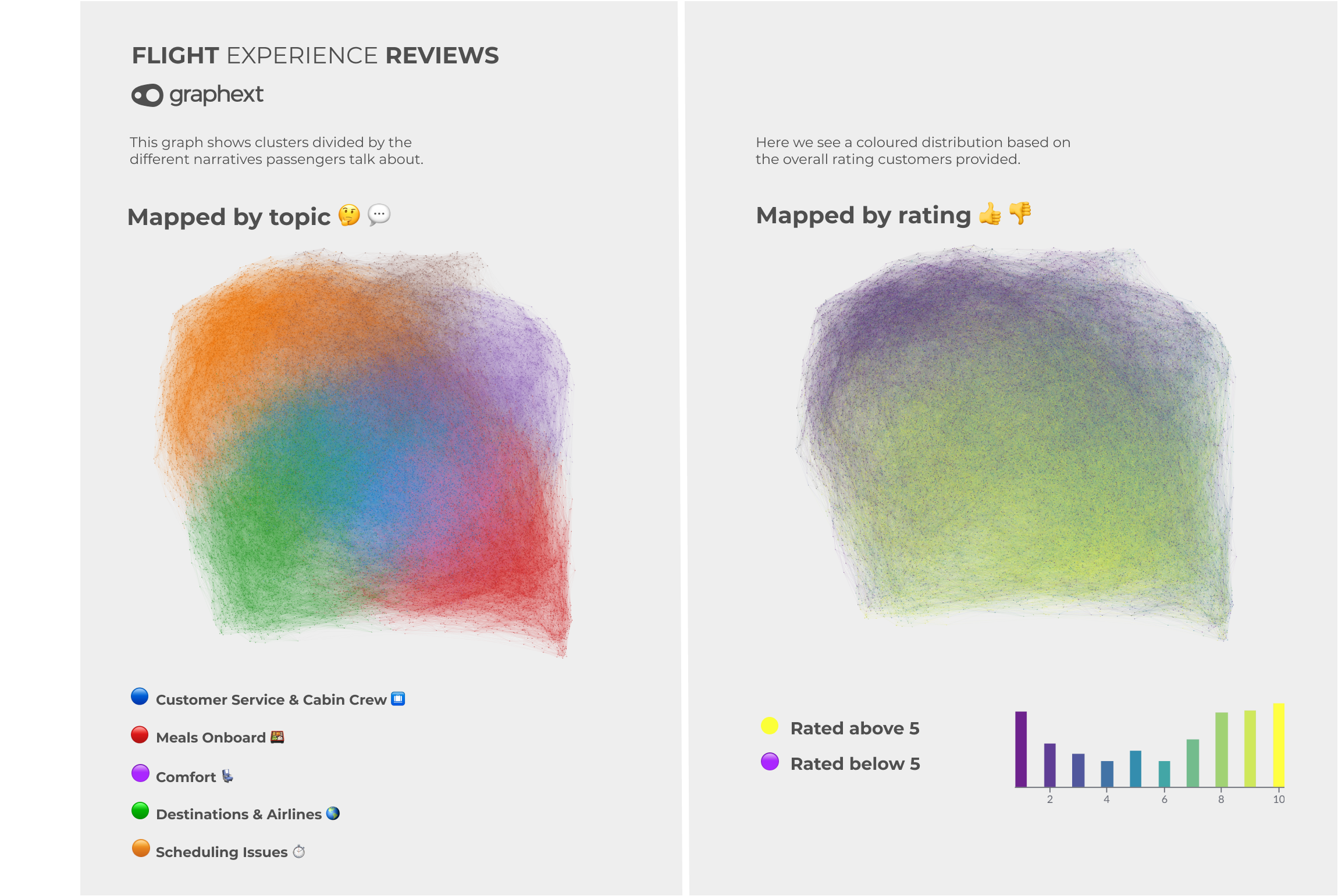
Playing with color mapping inside of the project's Graph, helped us to understand that comfort and scheduling issues were the areas where the worst reviews are concentrated. But the question that was then bugging our team was whether or not airlines became proactive in improving passengers' perception of those negatively reviews topics? Using Graphext's Trends panel, the team then began to plot how the sentiment of reviews evolved over time.
Airlines have adjusted services that were easily fixable but ignored more difficult problems.
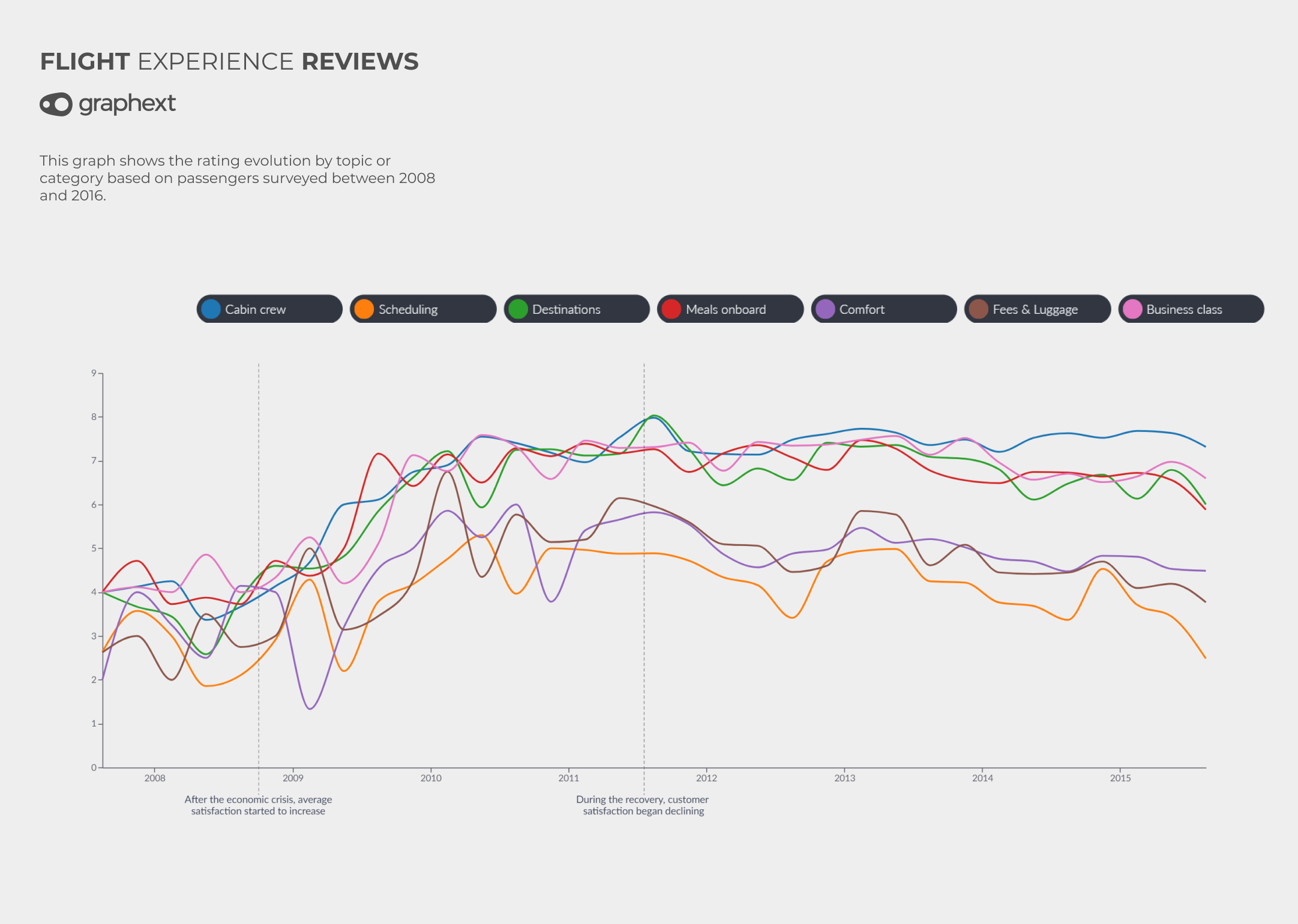
We were able to discover that the most easily fixable issues like food, cabin crew assistance or business class service were subject to less negative reviews as time moved on. However, experiences before and after the trip (fees, onboarding, luggage transport..) were not subject to the same trend.
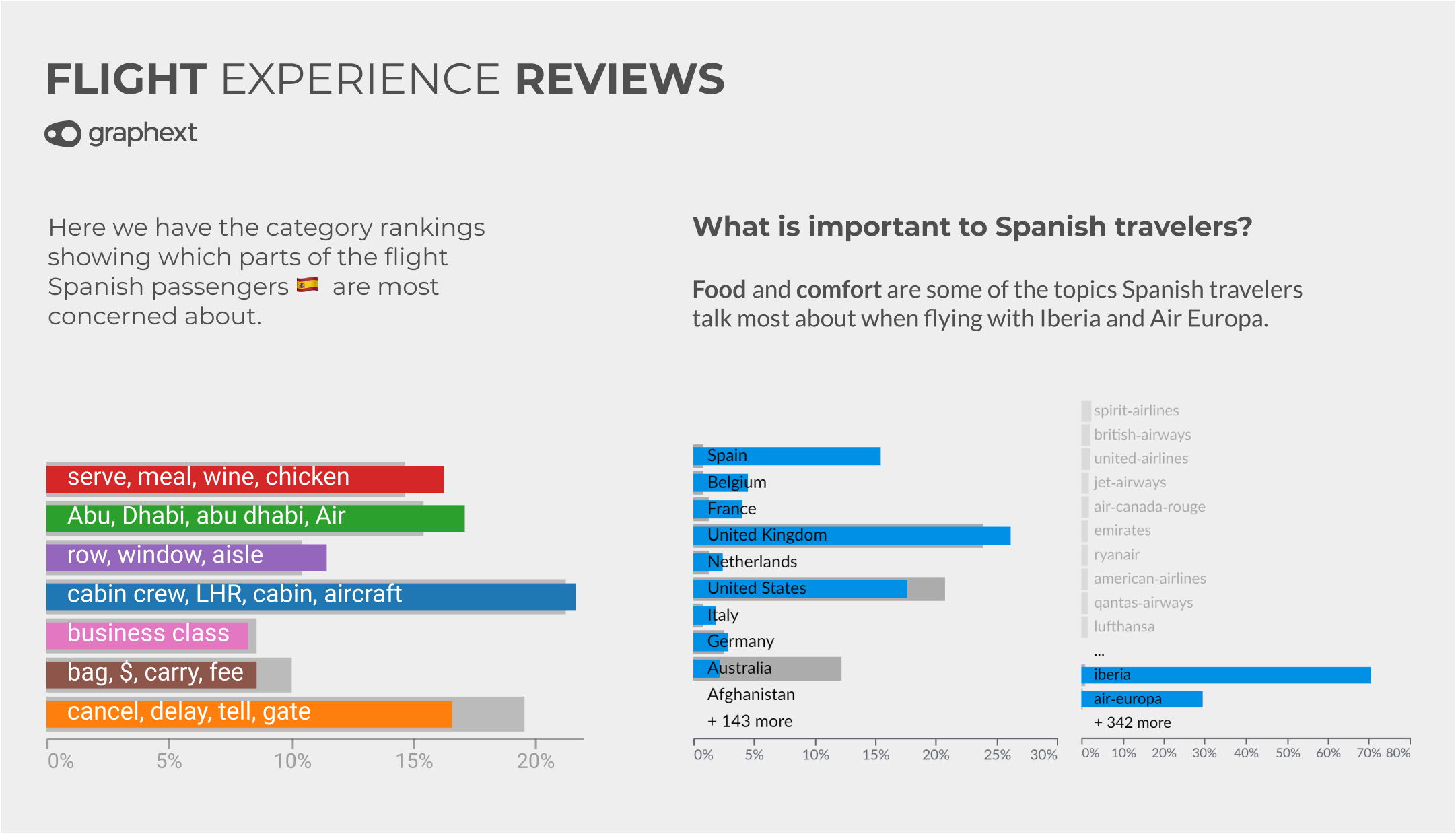
Spanish passengers are not only paying for a seat; they consider good food and comfort essential parts of the flight experience. Luggage transport and check-in are not critical topics for the surveyed Spanish customers.
Spanish passengers demanded high quality food and accommodation. Asian passengers generally showed more gratitude than their European counterparts.
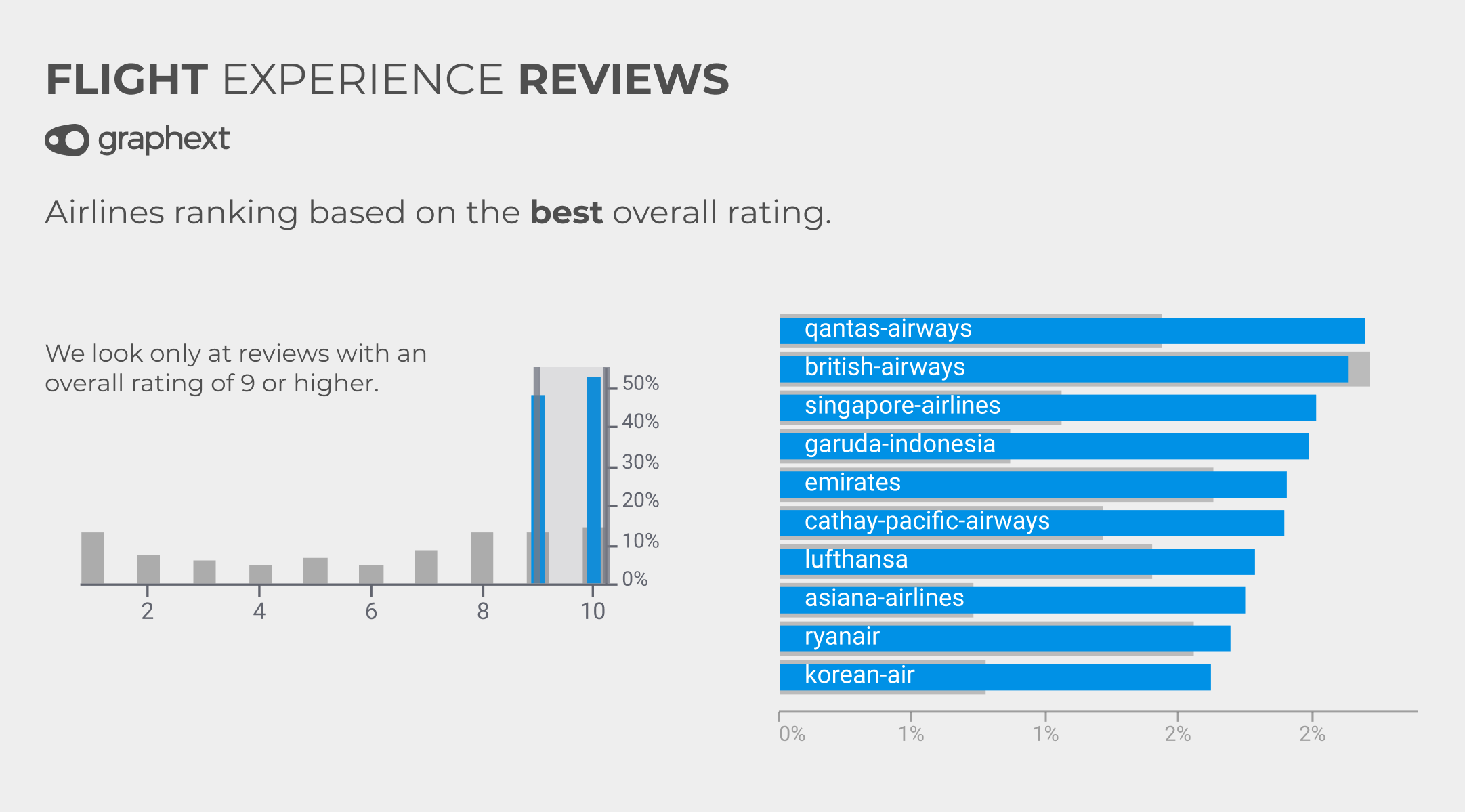
Airlines from the US and Canada suffered from the worst reviews.
